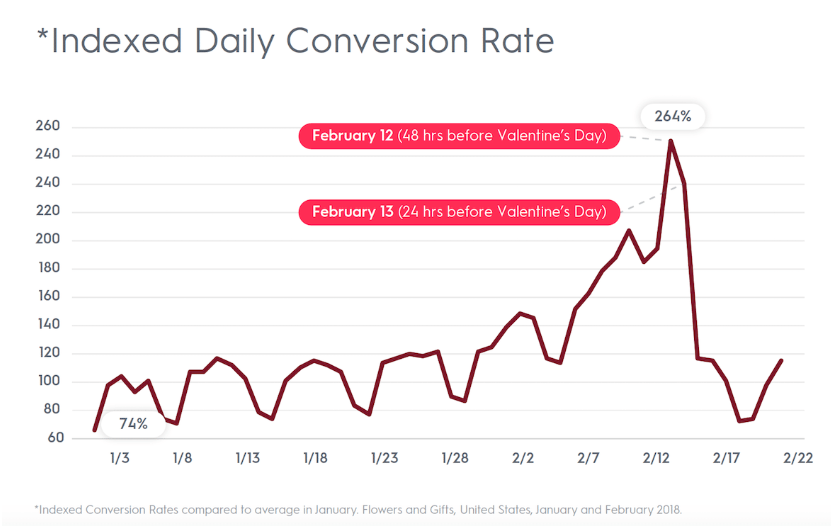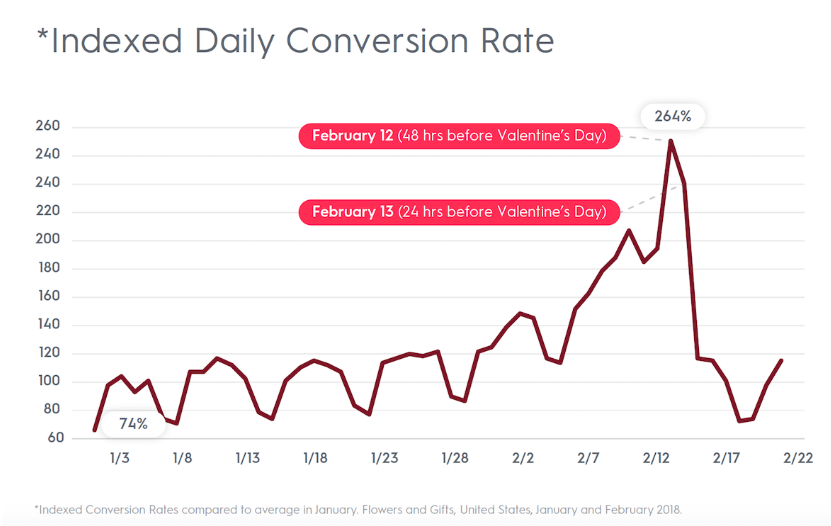Valentine’s Day, whether you look forward to it or dread it, there’s no real hiding from it with brands keen to capitalise by bombarding their audience with messages. However we can look to do this in a more effective and efficient manor by using behavioural science to ensure you are tapping into the right customers and at the right times.
There are many ways to understand your audience and by delving into personality traits and layering this with mood and timing, we can understand consumer behaviour on a deeper level.
Personality
Personality is a key factor in influencing customer decision making.
When it comes to present buying, we know that people with high levels of agreeableness are more likely to give presents overall as they are particularly predisposed to establishing and maintaining social relationships. And those presents that have been carefully thought out, with time and effort put behind them, come from those who have higher levels of conscientiousness.
By drilling down into people’s personalities even more, we can see that people with high levels of neuroticism and introversion would prefer to buy presents in toned town colours, such as black roses, while people with low level of these traits would likely buy a multi-coloured bouquet.
If people are open to experience they are likely to buy unusual, humorous, risqué or otherwise unconventional presents, however people with low openness would opt for more predictable and conservative items.
Then there are those that are left with buying the rather sad looking bouquet of flowers that everyone else has left. The leave things until the last minute type of people. They’re likely to have low levels of conscientiousness , so advertisers would do well to send this group some additional prompts and reminders
Mood
We also can’t ignore mood when it comes to customer behaviour. Low moods make people engage in activities, such as comfort eating or shopping. In the context of the Valentine’s Day, people in a low mood may become more motivated to buy presents for the loved ones in order to make their relationship more emotionally salient. The awareness of being loved then counteracts this mellow mood.
Conversely, happy moods have a positive influence on purchase motivation, as happy people engage in mood preservation strategies and are subject to the mood induction effect. This refers to the fact that when we are happy we want to share (induce) happiness to others and buying a present can be part of this motivation.
Timing
Last but not least, timing. As previously mentioned, conscientiousness is a major determinant of whether we are “forward thinkers” – planning ahead and managing time well, or constantly procrastinating last minute buyers. This distinction can be seen in the conversion rate data for flowers and gifts, as shown in the chart below.

We can see that the conversion rate steadily rises several days before the Valentine’s Day (which represents forward thinkers). After this we can see a decrease which marks the border between two buyer types where it skyrockets just before the Valentine’s Day; revealing the last minute buyers. Even after Valentine’s Day we can see that the conversion rate is relatively high (index of 120).
Taking this insight into consideration, brands selling Valentine’s gifts should up weight their campaigns at these 2 separate moments to cater for these 2 types of buyers, as well as looking to extend their campaign after Valentine’s to take advantage of the belated buyers.

Valentine’s Day is here to stay, and by using behavioural science insights you will be able to target the thoughtful, to the last minute shopper.






